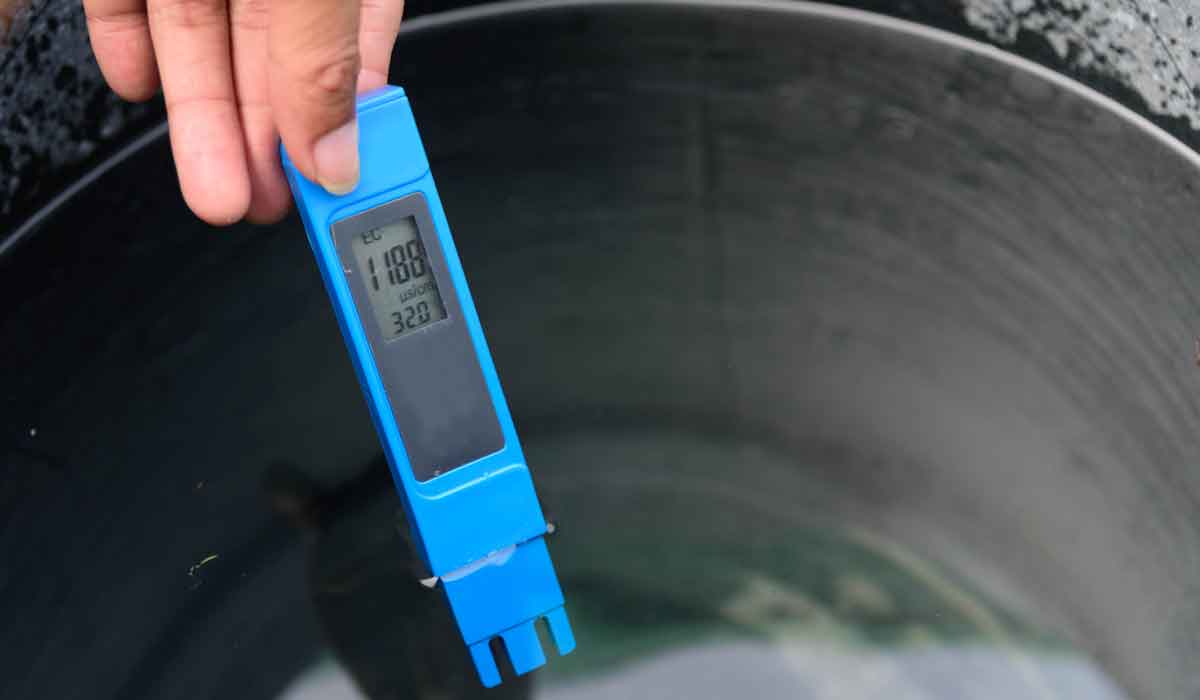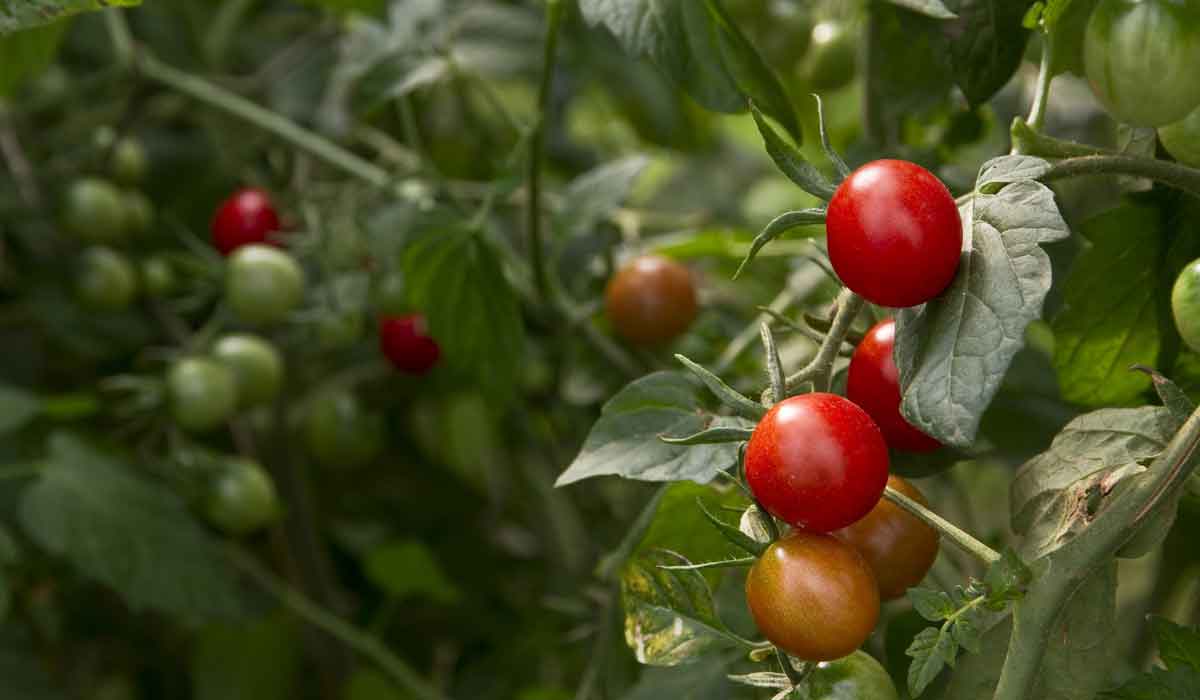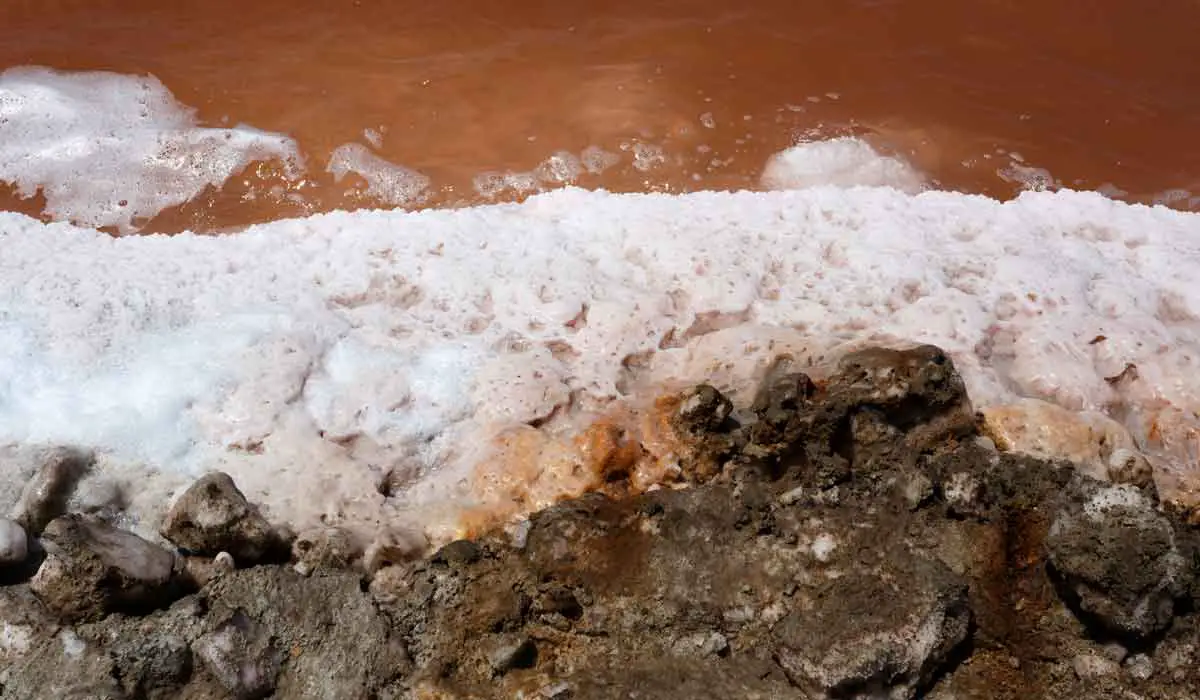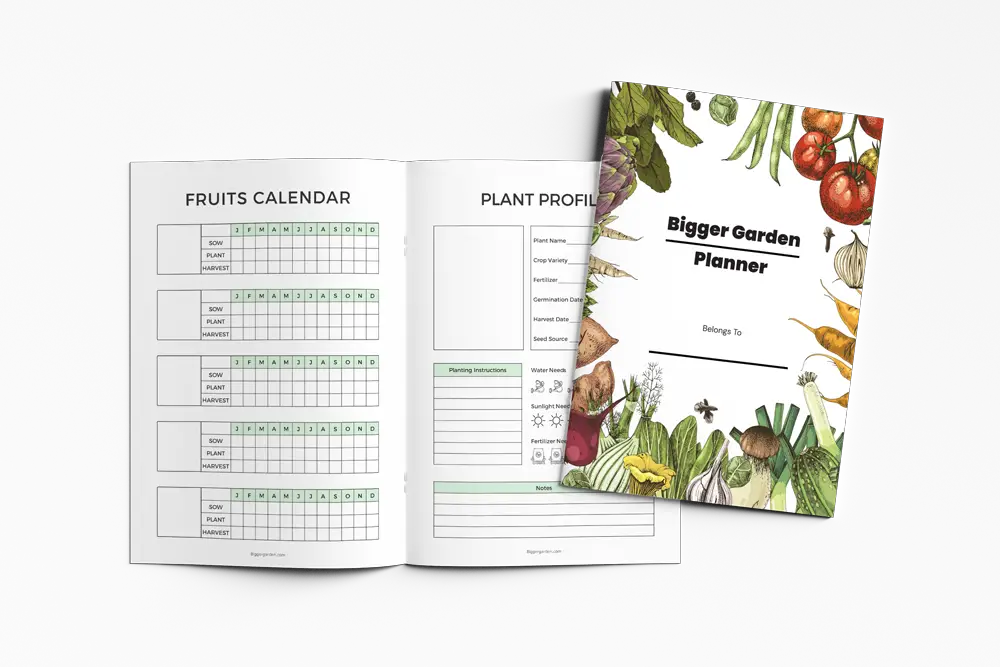What is Electrical Conductivity in hydroponics – Why is EC Important?

This post follows our research editorial guidelines.

There’s something magic about creating the perfect hydroponic nutrient solution. Blending together water and nutrients feels like pure alchemy, a spell to turn tiny seedlings into luscious sprawling crops. There’s a lot to consider and readings like the electrical conductivity can help make it easier. This is also known as the EC and is a window into what’s going on in our solutions. A good understanding of what EC is and how it works will make it much easier to provide what your plants need to grow.

Table of Contents
What is EC?
Electrical Conductivity reflects the capacity of the solution to carry an electrical charge. Inorganic salts dissolved in water increase the EC and consequently give a higher reading. EC also impacts the ability of the plants to retain and use water in the solution.
Electrical Conductivity: Why It Matters
Usually shortened to ‘EC’, the electrical conductivity is a quick and easy way to work out the richness of your hydroponic solution. It uses a quirk of chemistry and the physics of electricity to measure the concentration of salts into your solution. EC matters because it allows us to track the use of nutrients and water in real time.
Almost all nutrients we add to our hydro rigs are a form of mineral salt. In terms of chemistry a salt is any molecule that is made up of a metal and a non-metal, bound together. Each of these parts has an electrical charge that helps hold everything together. When added to water, the water molecules use their own properties to split the salt into those two separate pieces.
Table salt is the type of salt most people are most familiar with. It’s a pretty simple molecule, made of one atom of sodium metal and one atom of chlorine gas, with each grain composed of hundreds of millions molecules arranged in a crystal. Add the grain to water and it dissolves. The molecule breaks apart into its individual atoms. Each of the parts are held together by a mild natural charge. A sodium molecule has a mild positive charge, and the chlorine has a mild negative charge.
The nutrients we add to our systems are generally more complex, but the basic principle is the same. They too break up into their positively and negatively charged component parts once the hit the water. All those charged particles swimming around in there change how efficiently electricity moves through the solution. Give it a zap and the electricity will use the dissolved salts to zip through the solution far more effectively than pure water alone.
The better the transmission, the more salt is present. Take a reading and convert it into a number and boom. You have handy figure to help you measure the nutrient load, whenever and however often you like.

What Is the Ideal EC for Hydroponics?
The ideal EC for any system will vary depending on the crop in question. Plants with low nutritional requirements, like lettuce, need an EC reading of 1.6 or thereabouts. Others, like tomatoes, may need an EC as high as 4.0. Other conditions like temperature and humidity will impact the needed EC as the physiological need of the plants change.
How to test Electrical Conductivity
EC is one of the easiest things to test for in your hydroponics rig. You will need an EC meter of some description, and depending on the brand you’ll also need a calibration fluid to make sure the machine is set up correctly. Others work out of the box, making it very easy to measure EC no matter how inexperienced you are. Read the instructions of your conductivity meter before use so you know what type you have.
For the simple meters, it’s just a matter of drawing a sample of your nutrient solution and inserting the end of the meter. Most are no harder to use than a thermometer – indeed, many EC meters also test temperature and pH. A good EC meter will read the pH value, EC and temperature of the solution all at once and cut down on the amount of testing you need to muck about with.
You’ll get a number that’s usually under ten. This describes how much electricity has made it across the gap between the two electrodes during the time of the test. It’s measured in millisemen per centimeter, or mS(cm), but most of the time people just refer to the number itself.
A lower EC means lower concentrations of nutrients. A higher EC means there’s more in the water. Pure water itself conducts water poorly. It has an EC of almost zero. Tap water can contain all manner of mineral salts, and has an EC between 0.8 and 1.5. Seawater is so full of the stuff it conducts electricity wonderfully, and has an EC of around 500!
What’s the Difference Between EC and TDS?
TDS stands for Total Dissolved Solids. It’s a different way of measuring the same thing. Where EC measures the behavior of electricity in the solution, Total Dissolved Solids assess how much physical matter is dissolved in the water. It’s measured for water using parts per million and describes how many molecules of other substances there are per million molecules of water. It’s sometimes shortened to PPM.
Hand-held PPM monitors use electricity to check the conductivity and then convert it to PPM. While this will give a broadly accurate reading, not all fertilizers contribute to the EC in the same way. As a result, it’s not uncommon for the PPM is generally a little out if you’re using an electric meter.
It’s better to work out TDS when you mix the solution itself. If you’re using a commercial nutrient solution concentrate, you can work out the PPM by sticking to the dilution instructions on the pack.
You can also do it manually. One milligram of your component dissolved in one liter of pure water will become one part per million. For my American friends to the south, that works out to be about 0.02 ounces per gallon. The University of Pennsylvania has a great article that breaks down the math required using Imperial measurements. I generally recommend sticking to metric for this, as it makes the whole process much smoother.
How Do PH Levels Impact EC Values?
“Keeping track of pH and EC of the growing medium should be thought of as a preventative approach to minimize nutritional problems in greenhouses. It allows for the detection of possible problems before they have an important effect on plant growth and quality.” Marc van Iersel, Department of Horticulture, University of Georgia.
Though EC plays an important role in your hydro rig’s overall productivity, it’s not the only one. pH is the other great important number when brewing up your nutrient solution. The conductivity of a nutrient solution reflects its fertility through monitoring the number of minerals, and the pH of the nutrient solution reflects how easily the plant’s root system can take those minerals on board.
The compact summary is that pH measures the potential amount of reactive hydrogen in the nutrient solution. I go into a lot more detail on how pH in hydroponics work here. EC is more about the concentration of all reactive particles. While this in theory includes those reactive hydrogen atoms, they make up such a small proportion of the reactive particles collectively that they aren’t going to shift your EC ranges that much.
This is doubly true if your rig is running in the optimum pH range for most plants. They generally like acidic conditions at a low pH. hydrogen. If your pH can increase the EC value, it means that your plants are in profoundly alkaline conditions and probably showing some serious damage.

Frequently Asked Questions
Are pH and EC the same?
PH And EC Are Different Measurements Of Different Properties Of Your Nutrient Solution. Electrical Conductivity Is The Amount Of Electricity The Liquid Can Conduct Between Two Points. PH Reflects The Acidity Of The Liquid.
What happens if my EC measurement is too high?
Mineral salts are powerful things. They can cause damage if they are present inside plant tissue in amounts the plant can’t handle. It accumulates in their leaves and tissue and interferes with the biological functions within the leaf.
The other problem is more subtle. Roots are porous, wrapped in a semi-permeable barrier that allows water to flow freely from its environment into the plant itself. In a solution with a higher EC than the plant can handle, water can’t cross that barrier. It stays in the solution thanks to the pull of the salts. The plants can’t take up water and in extreme cases the solution can even start to dry out the roots themselves.
It’s one of the reasons it’s so important to maintain the EC of your solution. Your rig is a living system and will respond to the changes in the environment. On a hot day the EC will rise because the water requirements of the crops will increase. They’ll use more of that and leave the salts behind until the the solution is too salty to sustain life. Measuring the EC regularly check your solution is a small but vital step to make sure the nutritional value that we add does no accidental damage.
How do you reduce High EC in hydroponics?
The easiest way to reduce the EC of your hydroponics solution is to dilute it with the purest water you have available. Rainwater is very low in dissolved minerals, as is the water you get out of a reverse osmosis water filter system. Distilled water sold commercially for use in irons and steamers is also very pure. So long as use use a source of water with a lower EC than the nutrient solution it’ll drop the EC of a nutrient solution.
It’s also a good idea to flush your substrates when your EC levels pop out of range. Most growing media hangs onto fertilizer wonderfully so if you’ve got to much you’ll want to wash it out. A good thorough rinse will take salt from the medium as the water from the substrate drains. How you do this will depend on the system you’re using. Deep Water, NFT and other systems where the roots are free will flush more efficiently than bedded systems like Drip or Wicking beds.
What happens if my EC levels are too low?
A nutrient solution with an overly low EC level can result in nutrient deficiencies in your plants. The lower the EC the less fertilizer is present, so a lower EC doesn’t have the high levels of nutrients needed to ensure that your plants grow well. Like a high EC, low EC is easy to correct. You’ll need to add more nutrients to the solution. If using a concentrate you just need to add small amounts, testing regularly until you get a reading that’s inside your crops’ preferred range.
If you are mixing your own solution the news is less joyful – you’ll need to start a new batch from scratch. An EC that’s far too low suggests either your math is out or some nutrient has been missed, and you don’t want an incomplete solution in your system.
Final Thoughts
The wizardry of blending the nutrient solutions used in hydroponics is one of the most challenging parts of the whole endeavor. The challenges of picking the growing medium pales in comparison to getting the nutrient levels just right. There’s a lot less margin for error but it’s so very satisfying – and delicious! – when you get it right.
